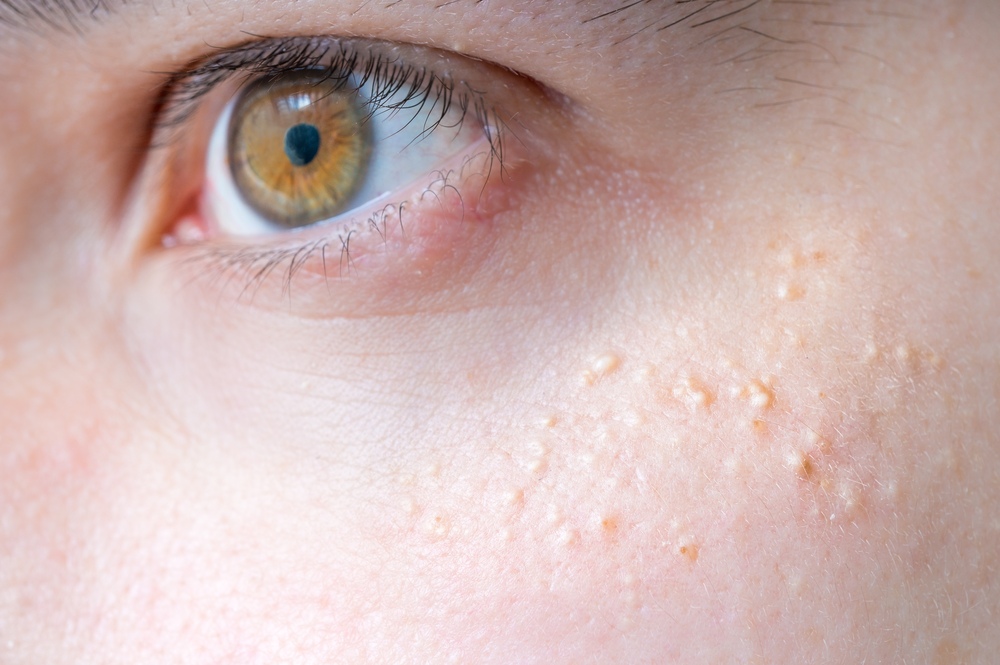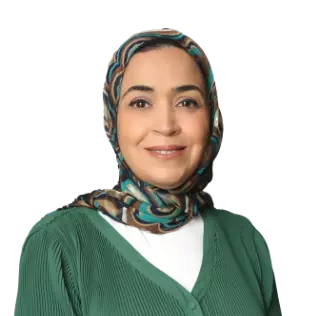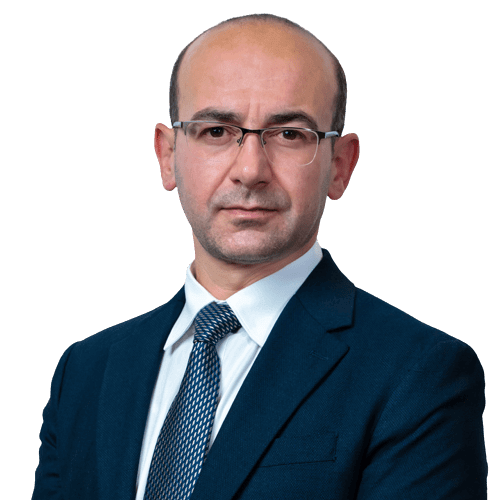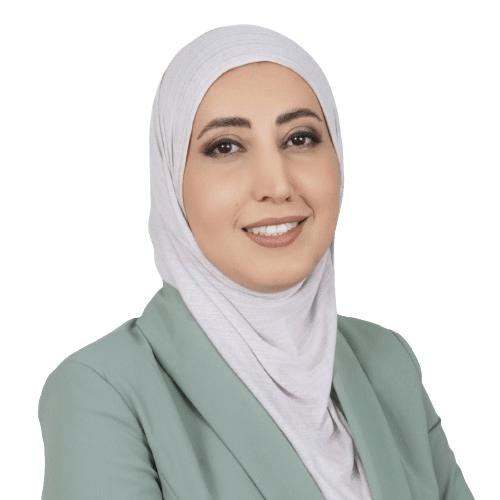Written By: Dr. Neetu Chaudhary
Dr. Neetu Chaudhary is a General Practitioner in the Department of Dermatology and Aesthetics at the Marina - Medcare Medical Centre.
Updated On:December 27, 2023
Read more.

What is Milia (Milk Spots)?
Milium cysts are the little, white bumps that commonly develop in clusters on the cheeks and nose. These clusters are referred to as milia. Milia is formed when the keratin protein, which is commonly found in the cells of the skin, hair, and nails, becomes trapped under the skin.
Causes of Milia
Newborns have different causes of milia than older kids and adults have.
Causes of Milia in Newborns
Milia in infants has no recognized cause. It's frequently confused for baby acne, which is brought on by the mother's hormones. However, milia doesn't lead to edema or irritation like newborn acne does. Baby acne doesn't often present until two to four weeks after delivery, although infants that have milia typically have it from birth.
Causes of Milia in Adolescents and Adults
Milia is often linked to some form of skin injury in older children and adults. This might include the following:
- Blistering brought on by a skin ailment, such as porphyria cutanea tarda (PCT), cicatricial pemphigoid, or epidermolysis bullosa (EB), or blistering injuries, including burns from poison ivy.
- Permanent sun damage
- Long-term steroid cream usage
- Techniques for resurfacing the skin, like dermabrasion or laser resurfacing
Milia may also appear if the skin stops naturally exfoliating. Aging may cause this to occur.
Symptoms of Milia
Milia is completely safe and only affects the appearance of your or your newborn's body temporarily. On your skin or the skin of your infant, tiny white pimples (cysts) develop. After a few weeks, these cysts normally go away on their own.
Milia symptoms may include the following:
- Cysts that range in color from white to yellow on your skin
- Clusters or groupings of bumps
- Depending on the type, milia may itch or develop as an elevated area of skin.
Types of Milia
There are various milia kinds, including the following:
- Neonatal milia: Infants who have newborn milia develop white cysts on their skin, most frequently on or near their noses. At birth, this kind of milia is present.
- Primary milia: Little cysts known as primary milia are frequently found on the cheeks, genitalia, forehead, and eyelids. Both children and adults are affected by them.
- Secondary milia (traumatic milia): These tiny cysts develop after your skin has been damaged by burns, rashes, blisters, or exposure to sunlight. They may also develop in response to a thick cream or ointment applied to the skin.
- Juvenile Milia: Cysts that are a sign of a genetic disorder are known as juvenile milia. They could exist from birth or develop later in life.
- Milia en plaque: Between the ages of 40 and 60, this uncommon form of milia frequently affects women or those who were assigned female at birth. The milia congregate on an elevated area of skin, typically on the face, jaw, eyelid, or behind the ears.
- Multiple eruptive milia: This uncommon condition results in clusters of cysts developing on your face, upper arms, and upper belly over the course of weeks to months. The cysts in question may itch.
When to see a doctor for Milia?
Milia is harmless and will disappear on its own in most cases. See your healthcare provider if the pimples on your skin are caused by milia and aren't going away on their own. To assist milia go more quickly, they might advise you to see a dermatologist or try new exfoliating methods.
Milia Risk Factors
Milia can also occur as a result of the following:
- Skin damage brought on by a rash, an injury, or exposure to the sun
- Use of steroids for extended periods of time
- Genetics
- An autoimmune disorder
- Don't practice good skin care
- Employ skin-clogging cosmetics or makeup
- Get insufficient sleep
- Struggle with skin-related concerns such eczema, rosacea, or dandruff
Infants are at high risk of being affected by milia. Infants occasionally get milia and baby acne since their skin is still learning how to replace itself.
Milia Complications
Milia don't lead to persistent issues. The cysts often disappear in neonates a few weeks after birth. Milia isn’t thought to be hazardous, despite the fact that the procedure might take longer in older children and adults.
Milia Diagnosis
Based on the appearance of the cysts, your doctor will inspect your skin to determine if you have milia. Biopsies of skin lesions are only occasionally required.
Milia Treatment
Treatment is not required for baby milia. The cysts will normally clear up within a few weeks.
Milia will disappear in older children and adults within a few months. There are procedures that can effectively get rid of these cysts if they are painful. They consist of the following:
- Cryotherapy. The milia are frozen by liquid nitrogen. The most popular removal technique is this one.
- Deroofing. A sterile needle is used to remove the cyst's contents.
- Retinoids for the skin. These vitamin A-containing lotions help exfoliate your skin.
- Chemical exfoliants. The first layer of skin peels off as a result of chemical peels, revealing fresh skin beneath.
- Ablation by laser. The cysts are removed using a tiny laser that is focused on the damaged areas.
- Diathermy. Cysts are destroyed by intense heat.
- Curettage for destruction. Surgery is used to cauterize and scrape the cysts.
Milia Prevention
Most occurrences of milia, particularly neonatal milia, cannot be prevented. You can lower your chance of getting some later-life milia kinds by doing the following:
- Limiting your time outside in the sun
- Utilizing thick face lotions or ointments only temporarily
- Avoiding steroid use for a longer period of time than recommended by your doctor
- Regularly exfoliating your skin or cleansing it
References
Berk, D. R., & Bayliss, S. J. (2008). Milia: a review and classification. Journal of the American Academy of Dermatology, 59(6), 1050-1063.
Bridges, A. G., Lucky, A. W., Haney, G., & Mutasim, D. F. (1998). Milia en plaque of the eyelids in childhood: case report and review of the literature. Pediatric dermatology, 15(4), 282-284.
Epstein, W., & Kligman, A. M. (1956). The pathogenesis of milia and benign tumors of the skin. Journal of Investigative Dermatology, 26(1), 1-11.
Stefanidou, M. P., Panayotides, J. G., & Tosca, A. D. (2002). Milia en plaque: a case report and review of the literature. Dermatologic surgery, 28(3), 291-295.
Meet our doctors from the Dermatology & Aesthetics department
|
||||||||
|
||||||||
|
||||||||
|
||||||||
|
||||||||
|
||||||||
|
||||||||
|
||||||||
|
||||||||
|
||||||||
|
||||||||
|
||||||||
|
||||||||
|
||||||||
|
||||||||
|
||||||||
|
||||||||
|
||||||||
|
||||||||
|
||||||||
|
||||||||
|
||||||||
|
||||||||
|
||||||||
|
||||||||
|
||||||||
|
||||||||
|
||||||||
|
||||||||
|
||||||||
|
||||||||
|
||||||||
|
||||||||
|
||||||||
|
||||||||
|
||||||||
|
||||||||
|
||||||||
|
||||||||
|
||||||||
|
||||||||
Similar Posts
teleMEDCARE App
Download teleMEDCARE app from Google Play or App Store to connect immediately to Medcare doctors at a click of a button and without an appointment.

Home Services
We offer our patients a broad range of home health care services in the comfort of their own homes. Book an appointment for lab tests, vaccinations, nurses and physiotherapists.

Chronic Care
Know more about our Chronic Care Management Programme in partnership with Damana Saicohealth.

teleMEDCARE App mobile
Download teleMEDCARE app from Google Play or App Store to connect immediately to Medcare doctors at a click of a button and without an appointment.

Home Services
We offer our patients a broad range of home health care services in the comfort of their own homes. Book an appointment for lab tests, vaccinations, nurses and physiotherapists.

Spotii
We have partnered with Spotii to offer a more flexible way to pay - Pay over time for your purchase. No interest, no cost & no catch.















































